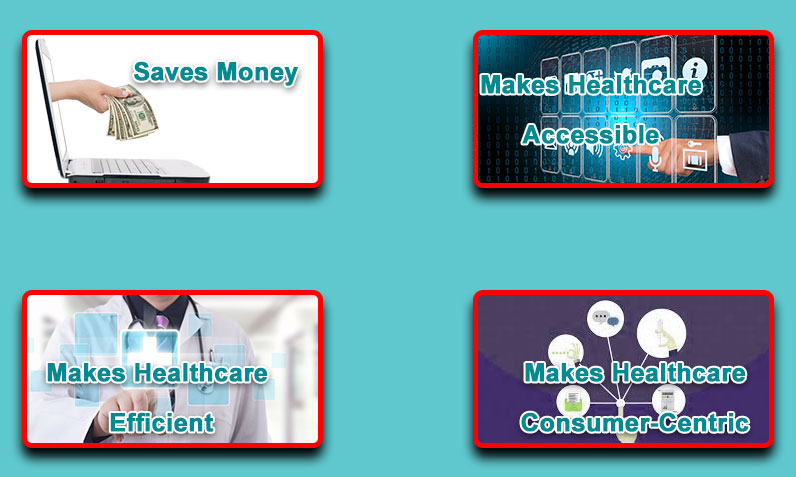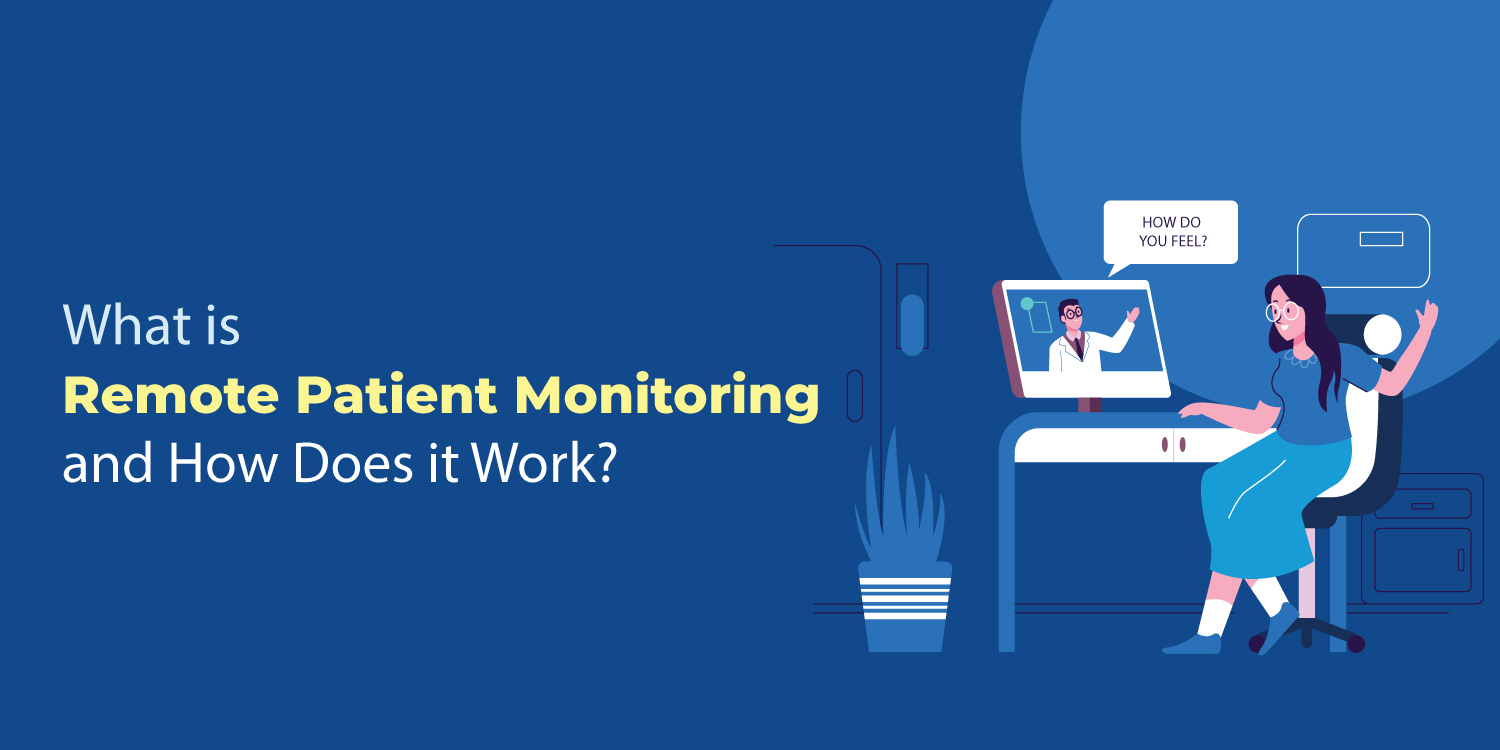Remote monitoring of patients helps healthcare providers to capture and track a range of health data including weight, movement, blood pressure, heart rate, vital signs, and much more. After collecting the data, it is sent to the health care provider who can track their patients remotely 24/7. RPMS uses digital technology to gather medical and other types of health data. Here we will discuss What is Remote Patient Monitoring how it works and what its are benefits in healthcare.
Table of Contents
ToggleWhat is Remote Patient Monitoring (RPM)?
Remote patient monitoring is a method of managing acute or chronic conditions via RPM technology while securely collecting and exchanging patient data.
RPM enables you to monitor patients in their own homes, at work, in transit, or even on vacation, using monitoring devices like:
- Glucose meters for diabetes management
- Heart rate monitors to manage congestive heart failure
- Blood pressure cuffs to measure blood pressure
- Oximeters to measure blood oxygen levels
- Continuous dementia surveillance monitors
- Calorie logging programs
- Exercise logging programs
Read Also: 10 Best Cloud Security Practices For Software Development
How Remote Patient Monitoring Works?
Remote patient monitoring is like having a virtual check-up. It uses digital technology to collect patient’s medical and health data. This data is then sent securely to healthcare providers, who can be in different locations. They check the information electronically and give recommendations, all in a digital format.
Step 1: Collection
The process starts with activating the patient monitor, once it is activated information is collected and put together into internal systems, then it is structured for transmission to the patient’s healthcare physician.
Step 2: Transmission
We have seen a drastic evolution in the technology used for communication within the last several years. Current remote patient monitors can transmit data more precisely and efficiently and analyze real-time data to detect irregular readings faster and more accurately.
With the help of the latest technology such as the internet, phone, text, or other forms of communication, the information gathered is then conveyed to the healthcare facility.
Step 3: Evaluation
After the transmission of data, internal algorithmic software and healthcare software development professionals will observe the data and specify any areas of concern. Information concerning these will be sent back to the patient or the patient’s healthcare team.
Step 4: Notification
The best thing about remote health patient monitoring is that whenever the physician finds a discontinuity in the data that needs immediate attention, alerts will be directed to elect emergency responders.
Step 5: Action
After an alert has been sent to emergency responders an emergency medical team will contact and make available immediate assistance to the patient. They will also explain the cause and provide ways to prevent another similar incident in the future.
Have an Idea for Remote Patient Monitoring?
We build plenty of RPM Systems! Get the FREE estimation of your product idea.
Mode of Operation
The patient has to upload health data recorded on a regular or irregular basis (depending on the health concern) on a web portal through an app on their PC or smart device. The web portal, usually managed by a telemedicine provider has a network of doctors and clinicians who can access the uploaded data. These doctors then treat the patient as and when appropriate and help them keep a check on their state of health. This mode of health monitoring is very effective for the chronically ill and the geriatric population who have to frequently go for checkups. Many conditions such as dementia and congestive heart failure need constant monitoring; telemedicine app development providers, in the form of round-the-clock surveillance systems, do have a solution for that.
The following facts have led to the increasing popularity and demand for telemedicine providers and RPMS solutions:
1) Efficiency in services
2) Simplicity
3) Cost minimization
4) Geographic limitations can be addressed easily as the person does not need to physically visit a doctor.
5) Round-the-clock service
6) More than one condition can be diagnosed on the same platform.
7) Reduces unnecessary hospital admissions.
Telemedicine providers have made significant contributions to improving people’s health conditions globally, and will certainly continue to do so with every day that passes.
Benefits of Remote Patient Monitoring

1. Saves Money
Remote patient monitoring isn’t just good for patients; it’s a cost-saver too. By integrating this technology with electronic health records (EHR), healthcare facilities can streamline their operations and reduce expenses.
2. Makes Healthcare Accessible
One of the best things about remote monitoring is that it brings healthcare to your doorstep. Patients, especially those dealing with chronic conditions, can easily share their health data with doctors without traveling. It leads to timely care, and the ability to take preventive actions when needed.
3. Makes Healthcare Efficient
Physicians are excited about technology that captures patient-generated data. Why? Because it eases their workload and streamlines healthcare operations. This technology is a game-changer for hospitals, alleviating staff burnout and automating repetitive tasks.
4. Makes Healthcare Consumer-Centric
With the integration of cloud-connected monitoring systems, the patient experience receives a significant boost. Patients using remote monitoring systems often express higher levels of satisfaction. Real-time patient data empowers providers to act proactively and prevent life-threatening complications.
RPMS Benefits for Patients
RPMS (Resource and Patient Management System) is an electronic health record (EHR) system developed by the Indian Health Service (IHS) for use in its healthcare facilities. There are several benefits that RPMS can provide for patients:
1. Better Access
In a nation where a dramatic increase in the number of insured has made it harder for some patients to access caregivers, remote monitoring of patients increases physicians’ capacity to treat more patients. The prospect of more RPMS technology-including healthcare organizations.
2. Improved Quality
As well as improving the amount of care, RPMS also can improve the quality of care. Since RPMS links clinicians with appropriate patient data more directly (and almost instantly), it makes their everyday tasks more productive and reduces the risk of burnout — resulting in clear benefits for patient care.
Better yet, RPMS improves patient behavior by creating a system that makes people more involved and accountable for their health. Successful RPMS systems deliver technology that is comfortable and familiar to patients, far from being the dark, sterile, daunting medical technology that comes to mind for many consumers.
3. Assurance
Essential as patient satisfaction and dedication are, the advantages of remote patient monitoring go beyond that, providing patients with invaluable confidence that regularly someone is looking out for their health and well-being.
Think of a cardiac patient who’s been lying in the hospital watching their heartbeat on the monitor for days. This is a frightening place to be a patient. So being able to provide that bridge and that connection for the patient [in the home], it’s like the healthcare team is going home with them.
4. Education, Support, Feedback
RPMs also provide patients with increased levels of knowledge, support, and feedback relative to conventional healthcare models, due to this constant, Thanks to this continuous immediate communication between people and their caregivers.
Conclusion
For more information on remote patient monitoring applications, visit the company that is dedicated to the development of healthcare software – Dreamsoft4u.
Dreamsoft4u Pvt. Ltd. is one of the Best Healthcare IT Services providers in India and the USA. We maintained a highly favorable rating among dentists, physicians, and patients.
We have clients ranging from dental clinics, hospitals, rural clinics, blood processing agencies, individual physicians, and full-service hospitals. We offer planning, system integration migrations, and many more. Our Healthcare IT Solutions make your staff hassle-free so they can focus on patient and client requirements.
FAQ’s
1. How soon can we implement remote patient monitoring?
We can tailor a quick implementation plan based on your needs, ensuring a smooth transition to remote patient monitoring.
2. If I use your solution, will my patient data stay secure?
We prioritize healthcare privacy standards. Our solutions are designed to comply with all key regional regulations including HIPAA, GDPR, NABIDH, and more.
3. Will your EHR system adapt to our specific hospital workflow?
Our system is designed to be flexible and seamlessly adapt to the unique workflows of different hospitals.
4. Do you have a rough idea of the setup costs?
While costs can vary, we ensure a cost-effective setup that aligns with your budget and specific requirements.
5. Does the system integrate seamlessly with our existing EHR software?
If your existing EHR software uses standard data exchange protocols such as HL7-FHIR, our solutions will integrate with them hassle-free. We also can customize the solutions depending on your EHR needs, ensuring minimum disruption.























